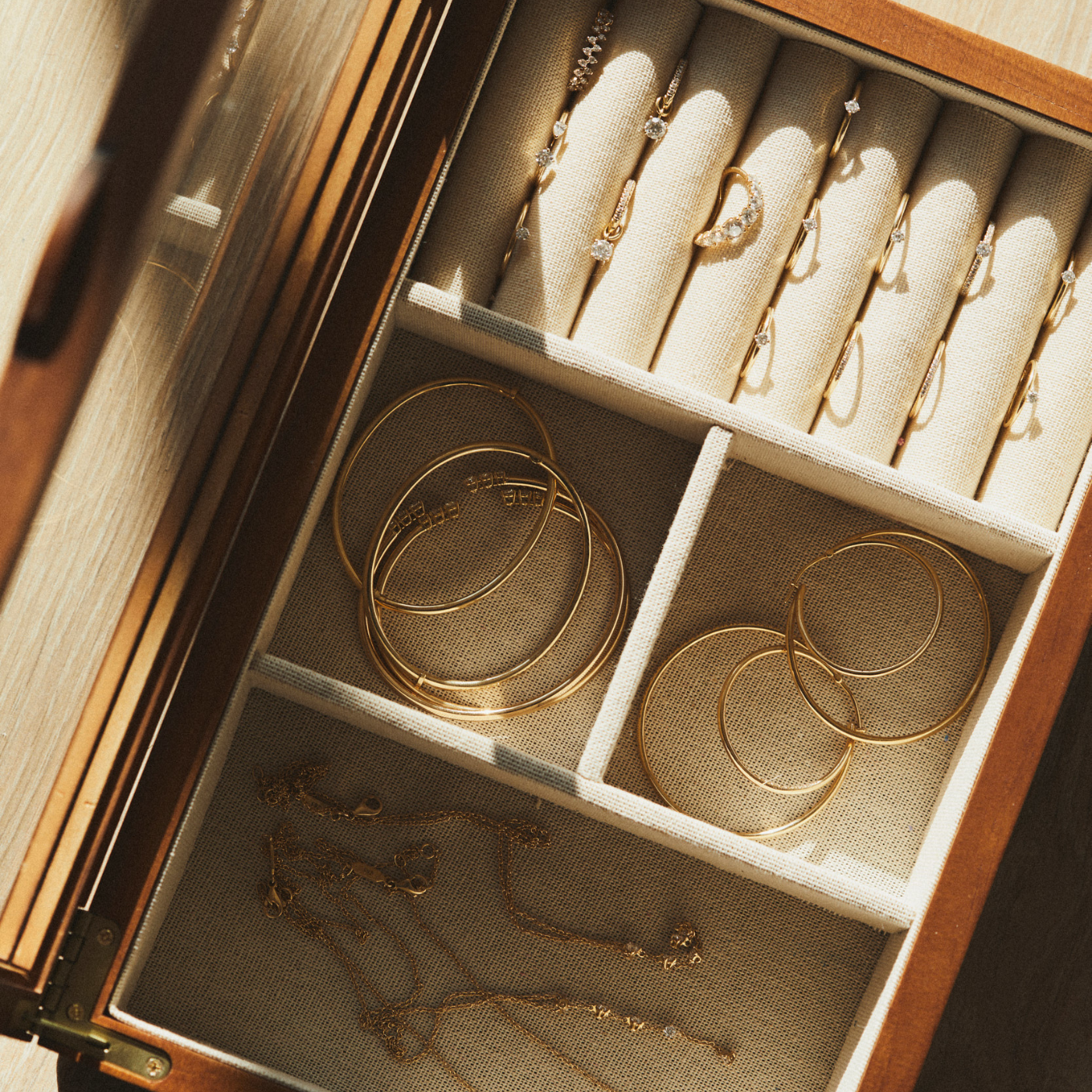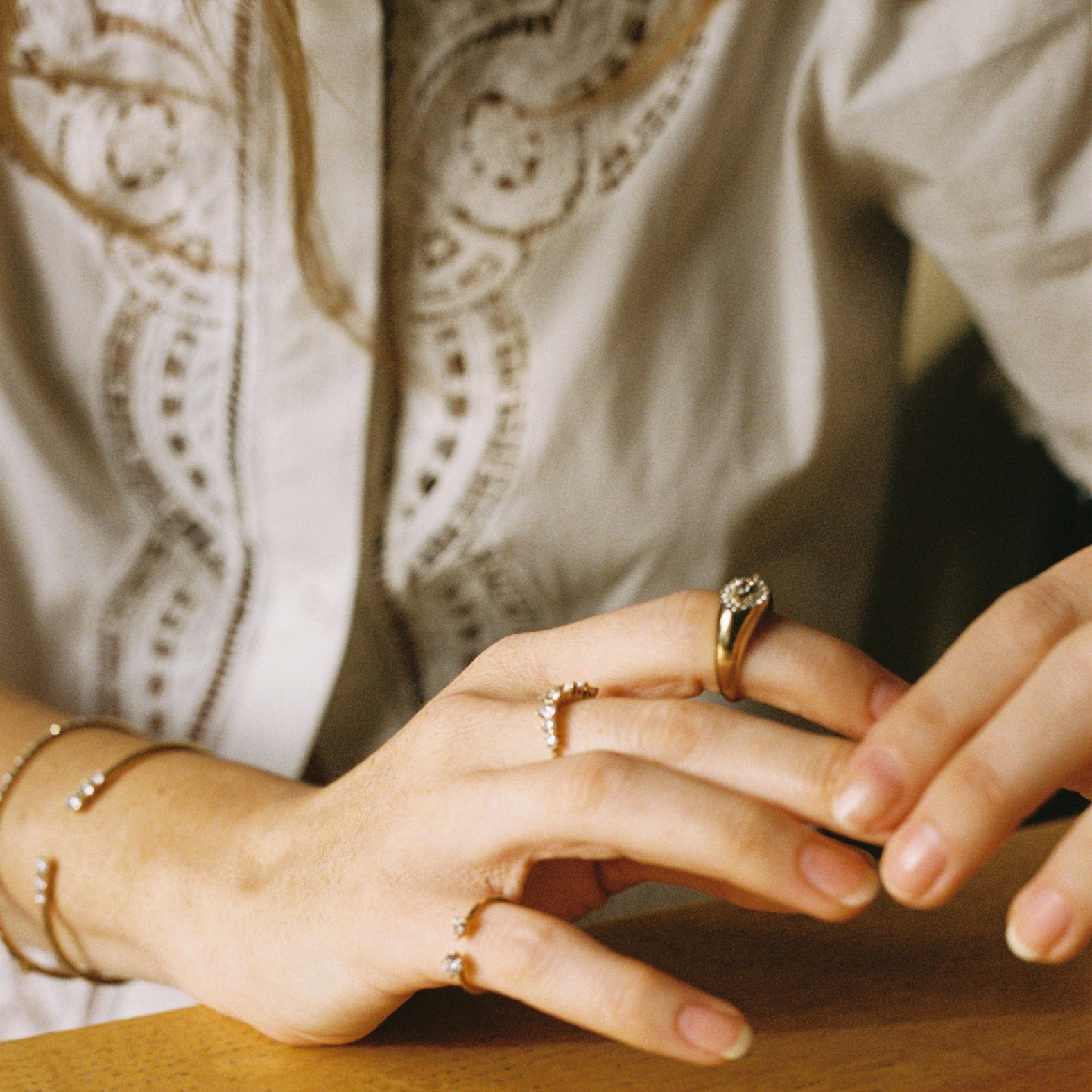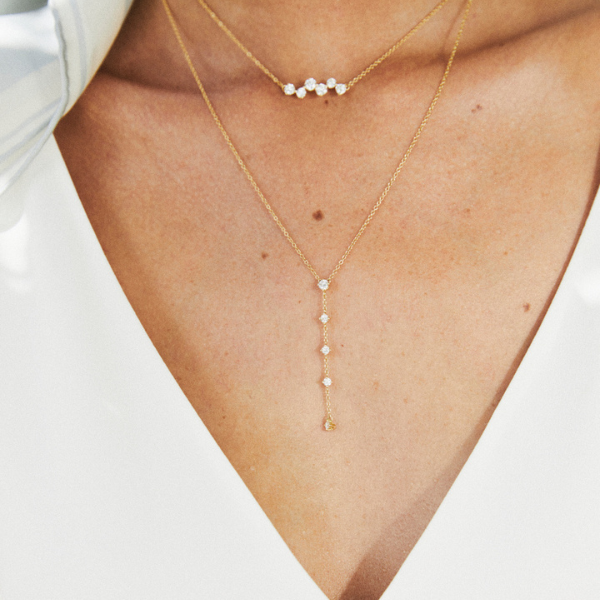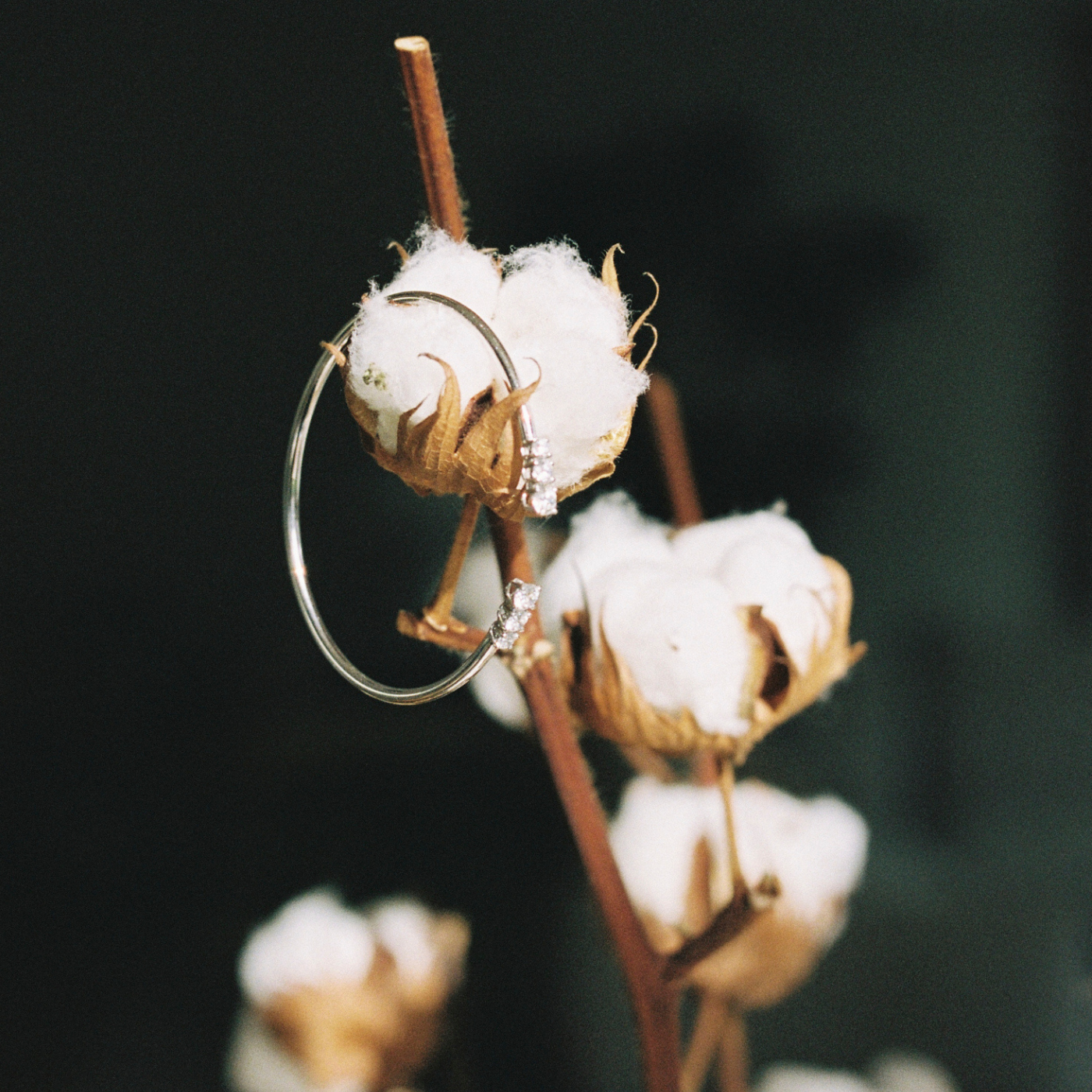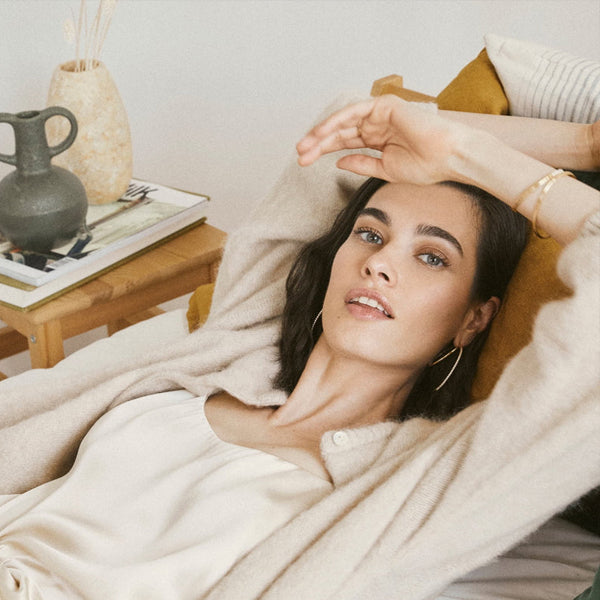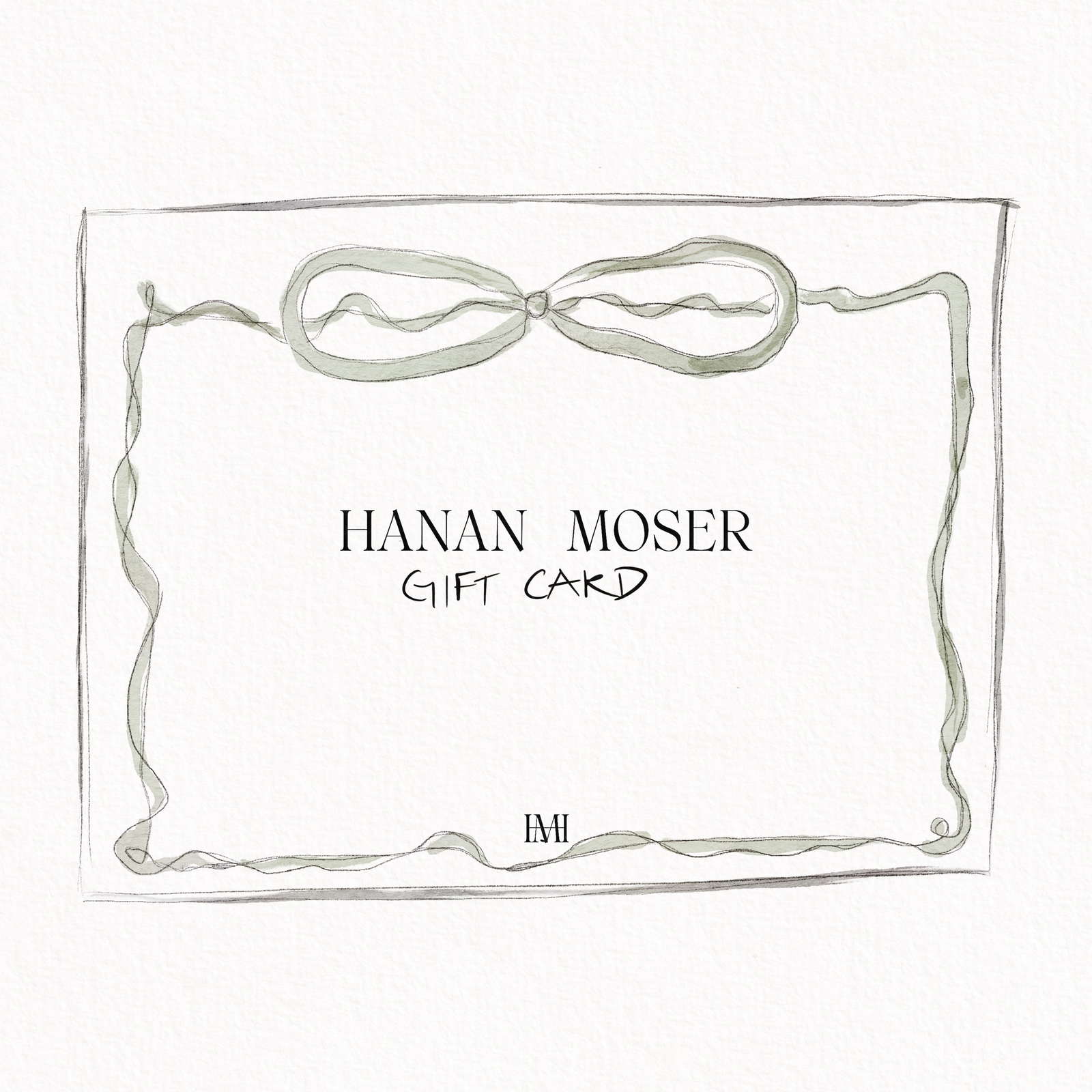Diamond education can feel complicated — let’s simplify it.
At HANAN MOSER, we’re lovers of sustainability, which is why you’ll find lab grown diamonds at the centerpiece of all of our jewelry. We make jewelry to empower women who want to take on the world and feel good every day. However, we know that choosing the right diamond jewelry can feel like a daunting experience. The diamond industry is huge, and wherever you look on the internet, you’ll find different information about diamond education, including type, size, weight, carat, and color. It’s no surprise then that we’re commonly asked, ‘how do I choose a diamond’?
That’s why we’ve dedicated this blog post to walking you through the steps of buying diamond jewelry and explaining how HANAN MOSER can help you find your dream diamond ring, necklace, bracelet, or earrings.
The 4 Cs of Diamonds
The first thing to know when considering which diamond to buy is the 4Cs: cut, clarity, color, and carat. This is a standard measure used in the diamond industry to gauge the quality and value of a diamond and is part of the process of understanding how to choose a diamond.
Cut
The cut or shape of the diamond affects both the appearance and the price of the final product. When valuing a diamond, considerations will be made about how skilfully the diamond has been cut; smaller diamonds with magnificent cuts appear bigger when mounted on jewelry, almost like an illusion.
A diamond that has been well cut will appear brighter, with more light reflection—adding to its sparkle. Some common diamond cuts include pear, marquise, emerald, oval, and heart. As you’d expect, the cut of the diamond affects its value, with well-cut diamonds costing more. When considering how to choose a diamond, think about which type of cut you would like and how the cut of the diamond looks to the naked eye from every side.

Clarity
An important part of diamond education is ‘clarity’, which refers to how clear the diamond is. Some diamonds may appear slightly cloudy or foggy, whereas others are crystal clear, without imperfections. The more blemishes on the diamond, the lower its value. There are six categories on the diamond clarity scale, from ‘flawless’ at the high end to ‘included’ at the low end.
Here are the categories on the Diamond Clarity Scale, ordered from high to low:
- Flawless (FL)
- Internally Flawless (IF)
- Very, Very Slightly Included (VVS1 and VVS2)
- Very Slightly Included (VS1 and VS2)
- Slightly Included (SI1 and SI2)
- Included (I1, I2, and I3)
It’s important to note that many of these imperfections can’t be seen with the naked eye. They do, however, impact the transparency and brilliance, which can lower the quality. The higher the clarity, the higher the cost of the diamond.

- Just remember, one person’s idea of imperfection is another’s idea of something unique and beautiful.
Color
White diamonds range slightly in color. For example, some diamonds have a yellow or blue tinge, a naturally occurring effect in earth diamonds and when growing diamonds in the lab. Colorless diamonds are considered to have a higher value.
Once again, color comes down to personal preference when choosing your diamond, so don’t be put off if a diamond you’re drawn to has a yellow or blue hue. Every diamond is totally unique, so there’s no diamond out there with the same coloring!

Carat
The final C in diamond education is carat. This refers to the size or, more specifically, the weight of the stone. Unsurprisingly, larger diamonds are higher in price.
The important thing to remember is that there’s no such thing as the ‘perfect’ diamond, but there is a perfect diamond for you. When considering the 4Cs mentioned above, remember to notice what you’re drawn to. If you like something, but it’s considered less valuable due to its cut or color, that’s ok! If it resonates with you, then go for it. Choosing something that really feels right for you will make it seem all the more precious.
Lab Diamonds vs. Real Diamonds
We’re often asked about the difference between lab grown, and earth mined diamonds. On a molecular level, the two options are identical. They’re so similar that it’s almost impossible to identify the source just by looking at them. The real difference lies in the origin rather than the final product.
Is diamond mining bad for the environment?
While mined diamonds have been traditionally sought after, people are waking up to the negative impacts that many mining companies have on the environment and local communities. Like anything from the earth, we only have a finite number of diamonds, and as it becomes harder to find and mine diamonds, increasing damage is being done to natural environments. Mined diamonds also often create poor working conditions and cause a lot of harmful and toxic waste.

That’s why lab grown diamonds are much better for the environment. The entire process takes place in a controlled lab environment, mimicking the earth’s high heat and pressured conditions to form the diamonds. This way, the earth’s natural resources aren’t depleted, and there’s no harm done to natural habitats in the process.
Growing diamonds in the lab is the eco-friendly option that renders the same result—beautiful diamonds without harm.
Selecting Your First Piece of HANAN MOSER Jewelry
When handcrafting our pieces, we embrace the juxtaposition of two opposing sides. Our collections of sustainable luxury jewelry are designed to be versatile and individual, playing with combined styles and layered pieces to create something unique every time. By growing diamonds in the lab and making ethical decisions in our processes, we’re offering you the sustainable option every time; HANAN MOSER jewelry is made to look good and feel good.
Browse our collection and discover pieces for a special occasion or an everyday moment, finding the perfect jewelry to reflect your unique style. Enjoy!
Our team is always here to answer any questions and help you pick the perfect piece for you. Reach out to us anytime or schedule a video call to see our pieces up close!
We hope you’ve gained some clarity on how to choose a diamond. The best thing to do is to trust your instincts and get as much information as possible about the diamond, but also notice what you’re drawn to and which pieces really speak to you. Diamond education is important, but finding a piece you will treasure and enjoy is the priority.
To browse our full collection of lab grown diamond pieces (all made with 18k solid gold), visit our online shop.


